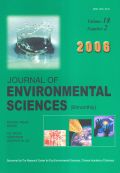Authors: Sheng, Xue-bin | Sun, Jian-zhong | Liu, Yun-xia
Article Type:
Research Article
Abstract:
The Bashang area is a water-source area and ecological barrier zone for Beijing and Tianjin. The area is located at 200 km from Beijing and Tianjin and is a typical agriculture-pasture-interlacing zone, in which the eco-environment is vulnerable and hence it is sensitive to environmental change. The area is relatively lagged in social and economic development, where the traditional cultivation mode is predominated in agriculture and animal husbandry, but the disturbance by human activity is relatively small. Therefore, in order to reveal the interrelation between eco-environmental change in the area and environmental change in Beijing and Tianjin area, it is
…fairly necessary to study the effect of land-use and land-cover change on nutrients in soil in this area. According to the actual situation of changed land use for the limited time period, five series of changed land plots were selected and 4 samples were collected from each series for the study. The samples were collected from different soil-forming levels at the same site in different time. Analysis of the collected samples indicates that in the process of change of land use and land cover, the nutrients in soil, such as organic matter, total N, total P, total K, and available N, P, K, and B, Mo, Mn, Zn, Cu, and Fe, have regularly changed. When the land had changed from grassland and non-irrigated farmland into woodland, and from non-irrigated farmland into irrigated field, the nutrients in soil totally increased. But there exists some exception, i.e. quick-acting N, P, K, and some microelements have appeared to be inconsistent with the mentioned above regularity in some cases.
Show more
Keywords: Bashang area, land use change, variation of nutrients
Citation: Journal of Environmental Sciences,
vol. 15, no. 4, pp. 548-553, 2003
Price: EUR 27.50





